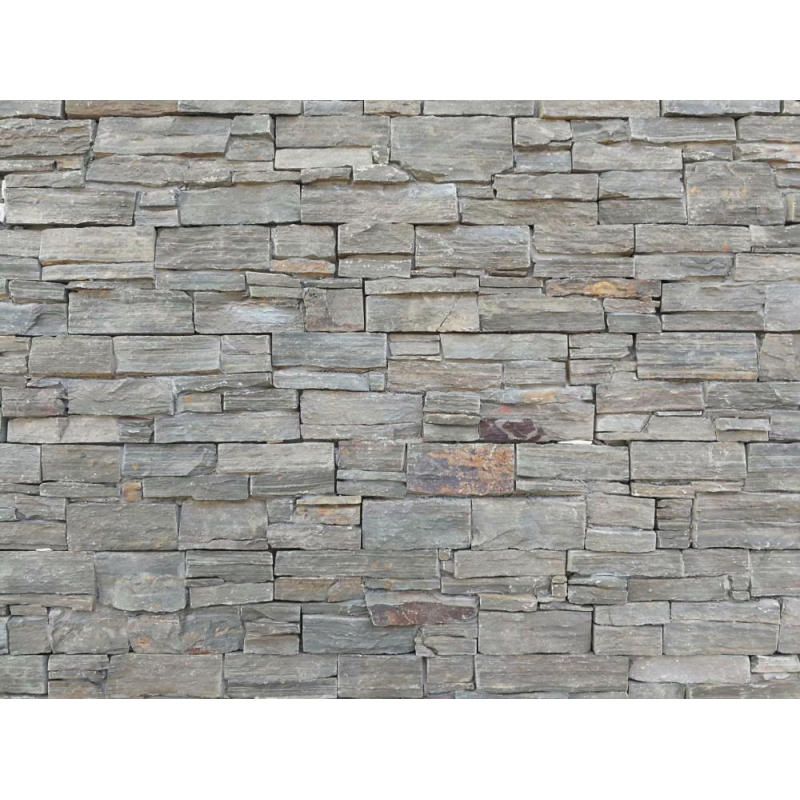
Ledge stone is also popular with the name stacked stone. It is composed of thin layers of natural stone strips, applied to the wall structures. The interlocking panels and corners adjust with each other creating a nice z shape pattern.
Appearance: Ledger stone consists of panels and corners. Ledger panels are suitable for flat vertical structures. Whereas corners are used to adjust on the sides. It looks like a stack that is placed one after another to create a structure.
Where it can be used: Natural ledger stone is suitable for both indoor as well as outdoor areas. Be it a fireplace, backsplash, façade, retaining wall, or indoor cladding, stacked stone is one of the best choices.
Sealers on Stacked Stone: Natural stones are attractive and long-lasting. But, one can enhance the beauty of wall stone with the application of sealers on the stone. It allows the stone to remain as it is for a long. Be cautious while using the stone sealers. Choose a sealer with a low pH balance.
Stone Backing: Natural stacked stone comes in two different backings. One is the cement backing which is easy to apply to the wall with the help of cement. Another is glue backing which adjusts the cladding with chemical/ glue. Both the stone backings are easy to handle and simple to install.
Grouts of the ledgestone: Whenever you install a ledge wall, make sure to adjust the thin strips tightly with each other. There should be no room for the grouts. If grouts are left somewhere, its shows uneven texture.
Beautiful Natural Stacked Stone Systems for Outside Wall

Weather - Resistant: Ledgestone is perfect for covering exteriors as they can be resistant the normal wear and tear. So, bring a beautiful touch to your space with the installation of ledgestone all around the exteriors.